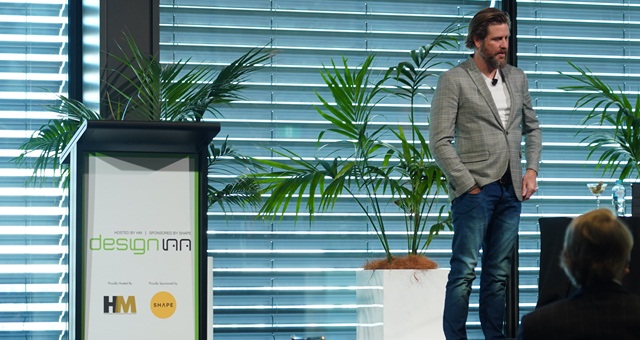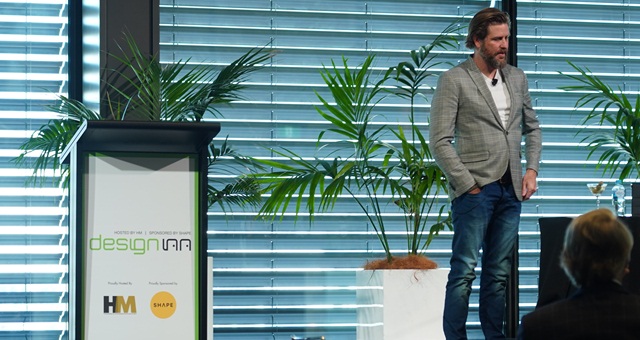
A suitably socially distanced crowd gathered at Hyatt Regency Sydney, with hundreds more tuned in virtually, for the return of Design Inn Symposium 2020 after a two-year break, with many topical issues covered by the sector’s brightest and most innovative minds.
Design Inn was hosted by HM Magazine and headline sponsored by SHAPE. The interior design focused event preceded the 2020 Australian Hotel industry Conference and Exhibition (AHICE), headline sponsored by Intrust Super and Hostplus.
The half-day session in front of 150 people in person and more than 600 virtual viewers, kicked off with a panel discussion which sought opinion on the role of hotels as economic enablers and place-setters.
Taking place on-stage in the hotel’s main ballroom, the panel looked at some of the sector’s more quirky venues including restaurants, bars and other common areas and discussed sustainable ways to give guests what they want and even things guests don’t yet know they needed.

“Placemaking is extremely important. The hotel experience is all about providing those touch points which help a guest walk away with a smile on their face,” said Ovolo Group Marketing Director, Stephen Howard.
Four of Australia’s most exciting and innovative hotels were then put under the microscope as HM Magazine Editor-in-Chief, James Wilkinson, sat down with Crown Resorts Executive Vice President Strategy & Development, Todd Nisbet, who told delegates a critical consideration in the AUD$2.2 billion Crown Towers Sydney was about providing a landmark development to cap off the transformation of the CBD’s Barangaroo precinct.
“Doing things like placing the bed to face the window does bring in some incremental costs but providing that view over Sydney Harbour to wake up to in the morning will deliver that something bit extra special for guests.”
“We’re in the experience business so if i do my job right, there should be no reason for you to want to leave the resort over the course of a 2-3 day stay.”
“We want to have a resort experience but it also needed to be in the context of an urban resort.”
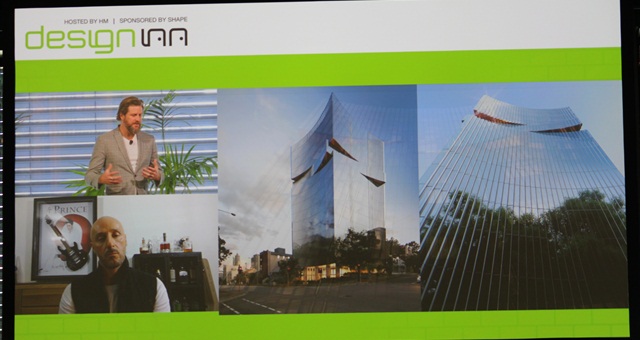
From here, the focus switched to W Melbourne, as Cre8tive Property Managing Director, Andrew Taylor dialled in for a virtual chat with Hachem Architecture Principal Director, Fady Hachem.
A key figure in the design, development and introduction of the luxury lifestyle brand to Melbourne, Hachem said he believed in the passion being shown by all parties involved in the project.
“W Melbourne is really about local influence and a local narrative. We need to promote Melbourne for what it really is. At face value, it’s just a typical city but when you look closer, it’s far more diverse than people realise. It was about making sure W Melbourne was very diverse and had many layers to it.
Hachem spoke of his inspiration to divert from the hotel’s opportunity to utilise a Collins Street address – arguably one of Melbourne’s most well-known streets – in favour of a more mysterious main entrance around the corner on Flinders Lane.
Taylor quizzed Hachem about some of W Melbourne’s most exciting elements of design, such as the wet deck and swimming pool, which will be located on Level 14. The pool area will become one of the hotel’s revenue generating areas, featuring an entertainment space and DJ booth which will allow the property to host lavish parties and allow the space to be rented out for corporate events.
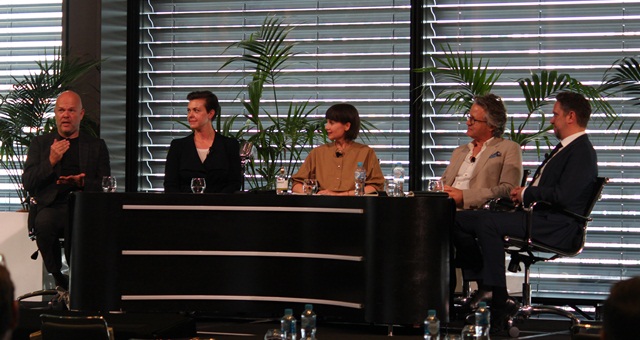
“Part of W’s ethos is innovation – being bold and provocative. We want to break that mould and look at what makes Melbourne.
The third hotel in focus was The Sandstones Hotel by Capella Group – one of the most innovative and exciting hotel projects coming to Sydney in the next few years. GHD Woodhead National Practice Leader, Leone Lorrimer conducted the virtual interview with Pontiac Land Group SVP – Investment, Joan Plouviet, who spoke of the challenges of putting together a state-of-the-art hotel within the confines of a heritage-listed building.
Finally, dialling in from Los Angeles was SH Hotels and Resorts President, Arash Azarbarzin, who delved deep into the upcoming Australian debut of the 1 Hotels and Resorts brand in Melbourne.
Speaking to James Wilkinson, Azarbarzin said he wasn’t content with just creating another run-of-the-mill hotel brand and wanted to do see something more meaningful expand across the world.
“Melbourne has been on our radar for a long time and when the opportunity came to us, we jumped on it,” he said.
Next up was a pair of informative panel discussions, with the first hosted by JLL Senior Project Manager – Hotels, Marie Colangelo, who focused on the tricks of the trade in hotel design and delivery. The discussion looked at design competitions conducted by developers which take place to assess the variety of design options and interpretations available.
“It’s up to each of the competitors to create something that will tell a story clearly and concisely, regardless of whether the operator is private or council-linked,” said WMK Architecture Director, John Andreas.
The panel agreed that a critical consideration new-build hotels must have is the ability to easily adapt and refurbish a property in five to ten years without needing to dramatically alter the exterior structure.
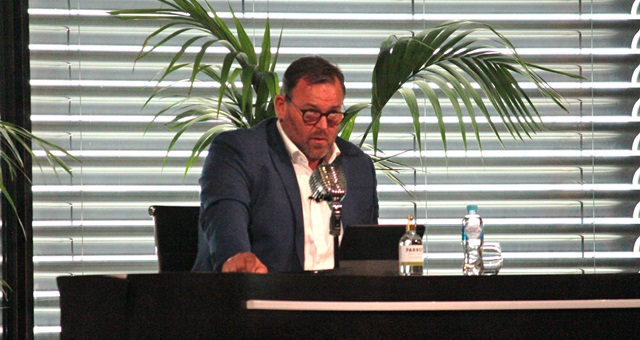
Another topic on the agenda was the synergy between lifestyle projects and how small hotel operators, particularly those in regional destinations, can refresh their properties to a high standard while maintaining the feel of being connected to the local community.
“It’s about understanding who your audience is and what you’re trying to achieve. When I travel, I’m looking for somewhere where I can bring my children and still enjoy it myself and have a break too,” said Scott Carver Director, Angela Biddle.
The final panel discussion was hosted by RAM Advisory Director and former AA Chief Executive, Richard Munro, with the topic squaring in on some of the best examples of sustainability in hotel design. Munro was joined by delegates virtually, speaking online from Auckland and Christchurch.
Speaking from Auckland, Space Studio Director, Vee Kessner, challenged designers to do more with less and “dematerialise” their thinking and how they approach a space.
“It’s about giving the traveller everything they need while not accumulating too much waste and non-essentials. Be brave to question what is and isn’t needed,” Kessner said.
“Resist the temptation to be overly complex. Sometimes simple is best.”
Design Inn 2020 closed out with a Q&A interview and presentation from legendary hotel designer, hosted by Angela Biddle, with Bill Bensley, who dialled in while on the move in his car in Bangkok.
Bensley, who has been designing world-class resorts for the past 36 years, spoke about how his vision for the Capella Resort in Ubud, Bali, saw the developer’s plans for 123 rooms reduced down to 23 luxury tents – a vision which paid dividends for owners by creating accommodation around the story of Bali’s first settlers in the 1800s. This narrative ultimately delivered higher room rates for owners over a smaller overall occupancy level.

